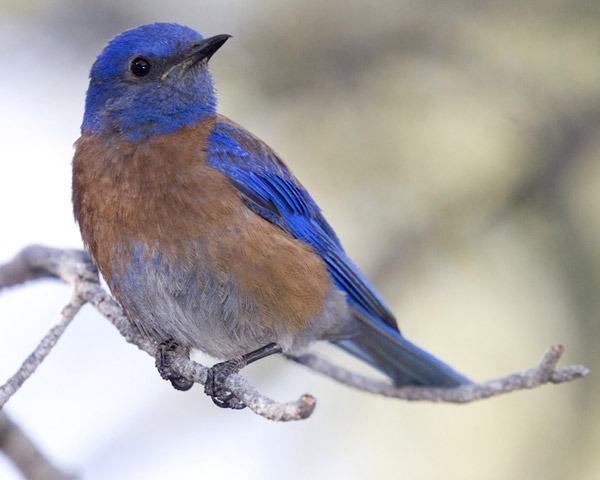The number of western bluebirds is seemingly dwindling in Clallam County, but Olympic Peninsula Audubon Society members hope to change that.
“The migratory breeding populations have been declining in the Pacific Northwest since the mid-1900s,” Joyce Volmut, OPAS and OPAS Conservation Committee member, said.
Habitat loss and competition with non-native birds are thought to be the driving forces behind the decline.
The northern edge of the western bluebird’s range has undergone “large-scale retraction due to the loss, fragmentation and degradation of oak-prairie habitats, where they most commonly occur,” according to a 2013 scientific report “Re-introduction of the western bluebird to oak-prairie habitats in the Pacific Northwest …” by researchers with Ecostudies Institute and American Bird Conservancy.
By the 1970s, coastal mainland breeding populations of bluebirds “disappeared” from Washington, according to the report. However in some areas, including south Puget Sound, the populations have recovered following the establishment of nest boxes programs similar to that underway by OPAS.
The local rate of decline of the migratory breeding bluebird population is difficult to quantify because of a lack of documented data, Volmut said.
“We have accounts of them nesting here, but it’s been anecdotal information,” she said.
Gathering the data
Given the annual and long-running Christmas Bird Count occurs during the winter, western bluebirds are rarely recorded, Volmut explained. Western bluebirds aren’t typically present in western Washington until about March through early July when the birds migrate north to regions like Clallam County to nest.
To build a baseline and begin to understand just how many western bluebirds are within the area, OPAS members are implementing a citizen science species recovery project known as the “Western Bluebird Watch.” The title of the project indicates only the western bluebird, but it includes mountain bluebirds, too, Volmut noted.
“The reason it’s called a ‘watch’ is because the first thing we need to do is record where they’re nesting,” she said.
Through reported bluebird sightings, Volmut and Doris Causey, a fellow OPAS member helping to coordinate the project, will begin to document where the birds are. The information gleaned from the sightings will then direct and narrow the overall population recovery effort, Volmut said.
Once a pair of bluebirds is located, a nest box or boxes specifically designed for bluebirds will be installed in hopes of encouraging breeding and over time increase the migratory population in Clallam County.
Sizing the nest boxes for bluebirds and placing them in the right habitat aids in deterring non-native species, Causey said. Like bluebirds, both European starlings and English house sparrows are cavity nesters and therefore often compete for the same nest holes.
When nesting, western bluebirds seek more open fields and prairies with few trees and scrubs, but in Clallam County “most remaining oak-prairie habitats occur on private lands,” Volmut said. Thus, support from private landowners and local neighborhoods is “essential” to the project.
“There’s no expectation that we’ll increase the population this year, but what we want to do is find out where they are,” she said. “This is a long-term project.”
Already, Volmut and Causey have one report of a possible bluebird sighting in the Diamond Point area.
Volmut and Causey each bring their own expertise and experience to the project, as both women have participated in similar efforts. Volmut was involved in successfully establishing what’s known as a “bluebird trail” (a series of monitored nest boxes placed along a prescribed route) in Kansas targeting eastern bluebirds. Causey installed bluebird nest boxes in the prairies of Montana that also proved beneficial to the bluebird population there.
By providing and monitoring nest boxes to replace lost natural cavities, Volmut and Causey are hopeful the project will help restore a critical habitat element needed by western and mountain bluebirds.
The project also aligns with the over-arching goals of OPAS and the Conservation Committee to develop citizen science projects, increase community awareness, promote birding and the conservation of habitat and biological diversity through educational and conservation efforts.
Because public engagement is the core of all citizen science projects there are several ways to participate in the Western Bluebird Watch. Participation varies from simply reporting bluebirds, volunteering to build and install nest boxes, helping to monitor nest boxes or hosting a nest box and permitting it to be monitored through early July.
For information or to get involved with the project, contact Volmut at 785-554-6379 or joyce.volmut@gmail.com, or Causey at 301-5724.
Reach Alana wLinderoth at alinderoth@sequimgazette.com.


